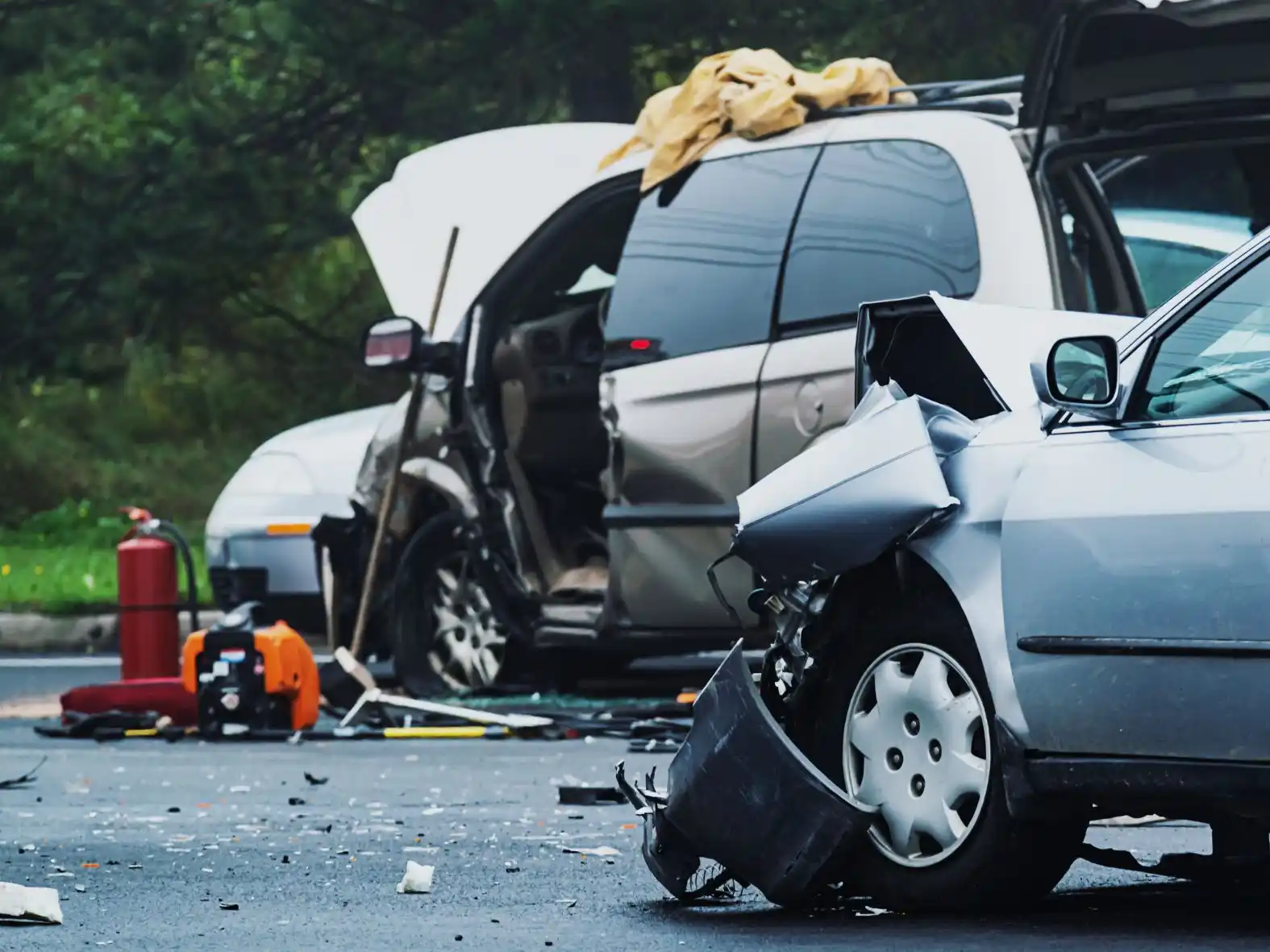
Glendale’s streets see hundreds of collisions each month. According to Glendale Police Department data, the city recorded 408 traffic collisions between April and June 2025 alone, with 121 people injured and two fatalities. Brand Boulevard, Colorado Street, and the Ventura Freeway remain high-risk areas where crashes happen daily.
One moment you’re driving to work or running errands, and the next, you’re dealing with injuries, medical bills, and insurance adjusters.
In this guide, we’ll walk you through each part of filing a claim in Glendale, explain how compensation works, and show why getting an attorney involved early often leads to better outcomes and less stress.
The minutes after a crash matter. Your actions right away can protect both your health and your legal rights. Here’s what you need to do at the scene and immediately after:
A personal injury claim is a legal process for recovering money after someone else’s negligence causes you harm. In car accidents in Glendale, this means the driver who caused the crash (or their insurance company) must pay for your damages.
California operates under an “at-fault” system. The responsible party’s insurance covers your medical bills, lost income, and other losses. You have two main options for pursuing compensation:
Filing an insurance claim means negotiating directly with the at-fault driver’s insurer. This process is faster but often results in lower payouts.
Filing a lawsuit means taking your case to court, which takes longer but may result in higher compensation, especially if the insurance company refuses to offer a fair settlement.
Glendale falls under Los Angeles County’s court jurisdiction. If your case goes to trial, it will be heard in the Los Angeles County Superior Court system.
Filing a claim requires careful documentation and strategic communication with insurers. Here’s how the process works from start to finish:
Collect everything that documents the accident and your injuries. This foundation supports every negotiation and legal argument you’ll make.
Contact the at-fault driver’s insurance company and report the accident. Give them basic facts about where and when it happened, who was involved, and that you were injured. Provide copies of your documentation.
Stick to simple, factual statements. Don’t guess about what caused the crash or admit any fault. Politely decline if they ask to record your statement. Insurance adjusters may use your words against you later.
Before making any demand, you need a complete picture of your losses. Add up these categories:
Write a detailed demand letter explaining your case. Describe how the accident happened and why the other driver was at fault. List each injury you sustained and how those injuries affected your life.
Calculate your total damages and state clearly how much compensation you’re seeking. Include a deadline for the insurance company to respond. A Glendale personal injury attorney can draft this letter to present your case in the strongest light.
After reviewing your demand letter, the insurance adjuster will likely make a counteroffer. Their first offer is almost always lower than what your claim is worth.
Don’t feel pressured to accept immediately. You can counter their offer with a higher amount supported by evidence of your actual losses. Negotiations may go back and forth several times. Have an attorney review any settlement offer before you sign.
If negotiations stall or the insurance company refuses to offer fair compensation, your lawyer can file a formal complaint with the Los Angeles County Superior Court.
Both sides will go through discovery, where they exchange evidence and take depositions. Many cases settle during this phase. If settlement talks still fail, your case will go to mediation or trial.
Figuring out who’s responsible isn’t always straightforward. Multiple parties might share liability for your injuries, and identifying all potential defendants can increase the compensation available to you.
The other driver is the most common defendant. If they were speeding, texting, running a red light, driving drunk, or breaking any traffic law that contributed to the crash, they’re liable for your damages.
Companies can be held responsible if their employee caused the accident while working. This includes delivery drivers, truckers, and anyone driving a company vehicle during work hours. Companies often have larger insurance policies than individual drivers.
Manufacturers face liability if a defective part caused or contributed to the accident. Faulty brakes, tire blowouts, airbags that didn’t deploy, or accelerators that stuck can all be grounds for a product liability claim.
Government agencies may be liable for dangerous road conditions. Potholes, missing guardrails, broken traffic signals, faded lane markings, or poor road design can all contribute to accidents. Suing a government agency follows different rules with shorter deadlines.
Glendale’s location creates unique liability challenges. The city sees heavy local traffic mixed with tourists heading to nearby attractions and commuters passing through on their way to Los Angeles. This mix often complicates fault determination, especially in multi-vehicle crashes.
Compensation in personal injury cases extends beyond just medical bills. California law allows you to recover all losses caused by the accident, divided into these categories:
These are your financial losses, as said previously:
These compensate you for losses that don’t have a clear price tag:
California courts award these extra damages in extreme cases to punish especially reckless behavior like drunk driving. The goal is to deter others from acting the same way.
California follows pure comparative negligence. This legal standard affects how much compensation you can receive if you share any responsibility for the accident.
Here’s how it works: You can still recover compensation even if you were partly at fault. Your award gets reduced by your percentage of responsibility. Say a jury awards you $100,000 in damages but finds you were 20% at fault because you were distracted when the other driver ran a red light. You would receive $80,000.
Insurance companies know this rule and will try hard to shift blame onto you. They’ll look for any excuse to claim you were speeding, not paying attention, or violating traffic laws. Even if their driver was clearly at fault, they’ll argue you contributed to the crash to reduce what they have to pay.
Having legal representation helps counter these tactics. An attorney can gather evidence proving the other driver’s negligence and showing you did nothing wrong.
California’s statute of limitations sets strict deadlines for filing lawsuits. Miss the deadline and you lose your right to compensation forever, no matter how strong your case.
You have two years after the accident date to file a lawsuit. This deadline covers claims for bodily injuries, pain and suffering, and medical expenses.
Vehicle damage claims have a three-year deadline. This applies to repair costs or replacement value for your totaled car.
Claims against government entities follow much shorter timelines. If a city vehicle, county bus, or state employee caused your accident, or if dangerous road conditions contributed to the crash, you must file a government claim within six months. The government agency then has 45 days to respond. Only after they deny your claim can you file a lawsuit.
Don’t wait until the deadline approaches to take action. Building a strong case takes time. Witnesses’ memories fade, evidence disappears, and injuries may worsen. Starting early gives your attorney time to investigate thoroughly and negotiate better settlements.
Getting hurt in a car accident creates enough stress without having to navigate the legal system alone. Thompson Law’s Glendale car accident lawyers offer a FREE CONSULTATION to review your case and explain your options.
Call now for a FREE CASE REVIEW. During this meeting, an attorney will listen to your story, evaluate the strength of your claim, and outline the best path forward. There’s no obligation and no pressure to hire them on the spot.
Let Thompson Law handle the legal work while you focus on healing. Contact their office today to get started.






Thompson Law charges NO FEE unless we obtain a settlement for your case. We’ve put over $1.9 billion in cash settlements in our clients’ pockets. Contact us today for a free, no-obligation consultation to discuss your accident, get your questions answered, and understand your legal options.
State law limits the time you have to file a claim after an injury accident, so call today.